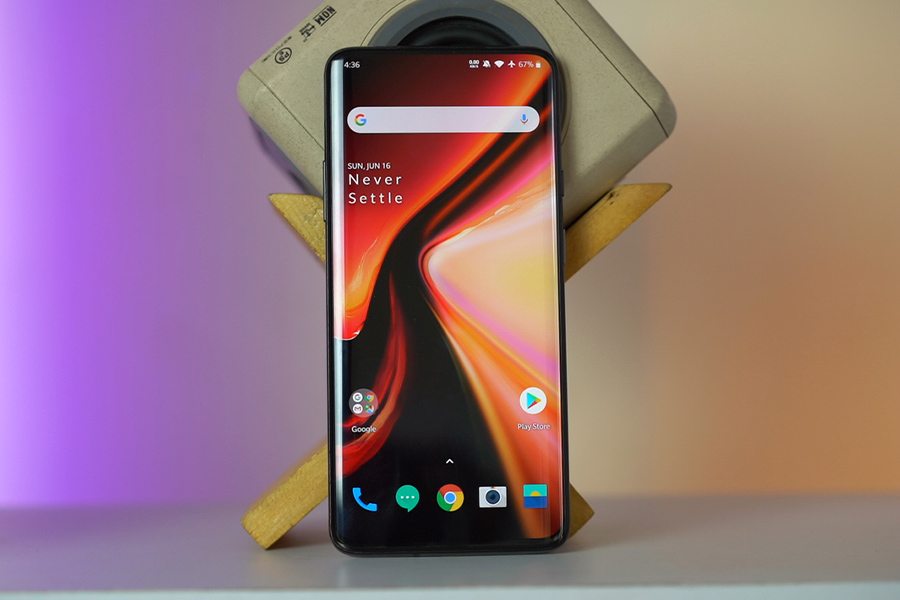
With the latest smartphone iterations, their displays are getting bigger. It seems that smartphone companies are obsessed with giving us larger displays, and we’re just accepting it. But while displays get bigger, the batteries on our smartphones don’t grow proportionately. However, a team of researchers have successfully introduced a new OLED technology breakthrough, which can make for longer lasting batteries.
The team of researchers belong to Imperial College of London. They discovered a way to make the OLED displays even more power efficient than it already is – by cutting down the present limitations of OLED. The present OLED technology is more power efficient than LCD, that’s a known fact. They can switch off pixels when not in use, giving them deeper blacks, and saving energy too.

But still, OLED displays have to add various filters to counter the glares from external light sources. That is, when you use your phones outside, they have to counter the glares by using various filters to improve readability. The filters can do that very well, but those filters also limit the amount of light that comes out of the display. Hence, the necessity to brighten up your smartphone outdoors. So, even if there is battery saving, it still wastes a significant amount of energy.
Also read How Smartphones’ displays are affecting your health
And the researchers found a solution for exactly this new OLED technology breakthrough. They found a way to control the chemistry of OLED materials (i.e. the structure) used in the display to bypass the the need for the anti-glare filter, which will extend the battery life.
They discovered that it’s possible to produce OLED displays that emit special type of polarized light, which, is not affected by external glares. So, there would be no necessity of a filter. Hence, phones wouldn’t have to brighten up the displays in external environments, making them more power efficient. In addition, this also makes for a lower carbon footprint.
This breakthrough can, very well, be the way to make screens of all kinds brighter, with better contrast and longer life. Also, this will not only help smartphones, but also TVs and smartwatches as well.
However, real life implications can be different. And we can’t be sure of the display quality just yet. So, we’re waiting for further test results. Still, this is a possible breakthrough for the smartphone world!







![Best Gaming Laptops in Nepal Under Rs. 250,000 (रु 2.5 Lakhs) [2025] Best Gaming Laptops Under 2.5 lakhs in Nepal [Feb 2025 Update]](https://cdn.gadgetbytenepal.com/wp-content/uploads/2025/02/Best-Gaming-Laptops-Under-2.5-lakhs-in-Nepal-Feb-2025-Update.jpg)
![Best Gaming Laptops in Nepal Under Rs. 120,000 (रु 1.2 Lakhs) [2025] Best Budget Gaming Laptops Under Rs 120000 in Nepal 2025 Update](https://cdn.gadgetbytenepal.com/wp-content/uploads/2025/05/Best-Budget-Gaming-Laptops-Under-Rs-120000-in-Nepal-2024-Update.jpg)
![Best Laptops Under Rs. 80,000 in Nepal [2025] Best Laptops Under 80,000 in Nepal March 2025 Update](https://cdn.gadgetbytenepal.com/wp-content/uploads/2025/03/Best-Laptops-Under-80000-in-Nepal-March-2025-Update.jpg)
![Best Laptops Under Rs. 70,000 in Nepal [2025] Best Laptops Under 70,000 in Nepal March 2025 Update](https://cdn.gadgetbytenepal.com/wp-content/uploads/2025/01/Best-Laptops-Under-70000-in-Nepal-March-2025-Update.jpg)
![Best Gaming Laptops in Nepal Under Rs. 200,000 (रु 2 Lakhs) [2025] Best gaming lapotp under 2 lakhs Nepal Feb 2025](https://cdn.gadgetbytenepal.com/wp-content/uploads/2025/01/Best-Gaming-Laptops-Under-2-Lakh-Nepal-Feb-2025-Update.jpg)
![Best Mobile Phones Under Rs. 15,000 in Nepal [Updated 2025] Best Phones Under 15000 in Nepal 2024 Budget Smartphones Cheap Affordable](https://cdn.gadgetbytenepal.com/wp-content/uploads/2024/03/Best-Phones-Under-15000-in-Nepal-2024.jpg)
![Best Mobile Phones Under Rs. 20,000 in Nepal [Updated] Best Mobile Phones Under NPR 20000 in Nepal 2023 Updated Samsung Xiaomi Redmi POCO Realme Narzo Benco](https://cdn.gadgetbytenepal.com/wp-content/uploads/2024/01/Best-Phones-Under-20000-in-Nepal-2024.jpg)
![Best Mobile Phones Under Rs. 30,000 in Nepal [Updated 2025] Best Phones Under 30000 in Nepal](https://cdn.gadgetbytenepal.com/wp-content/uploads/2025/01/Best-Phones-Under-30000-in-Nepal.jpg)
![Best Mobile Phones Under Rs. 40,000 in Nepal [Updated 2025] Best Phones Under 40000 in Nepal 2024 Smartphones Mobile Midrange](https://cdn.gadgetbytenepal.com/wp-content/uploads/2024/02/Best-Phones-Under-40000-in-Nepal-2024.jpg)
![Best Mobile Phones Under Rs. 50,000 in Nepal [Updated 2025] Best Phones Under 50000 in Nepal](https://cdn.gadgetbytenepal.com/wp-content/uploads/2025/01/Best-Phones-Under-50000-in-Nepal.jpg)
![Best Flagship Smartphones To Buy In Nepal [Updated] Best flagship phone 2025](https://cdn.gadgetbytenepal.com/wp-content/uploads/2024/07/Best-Flagship-Phones-who-is-it-ft-1.jpg)